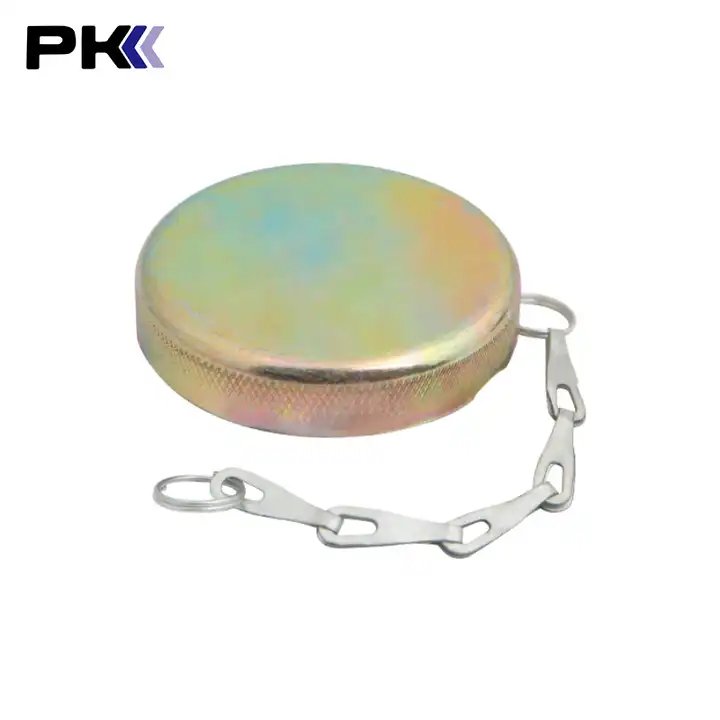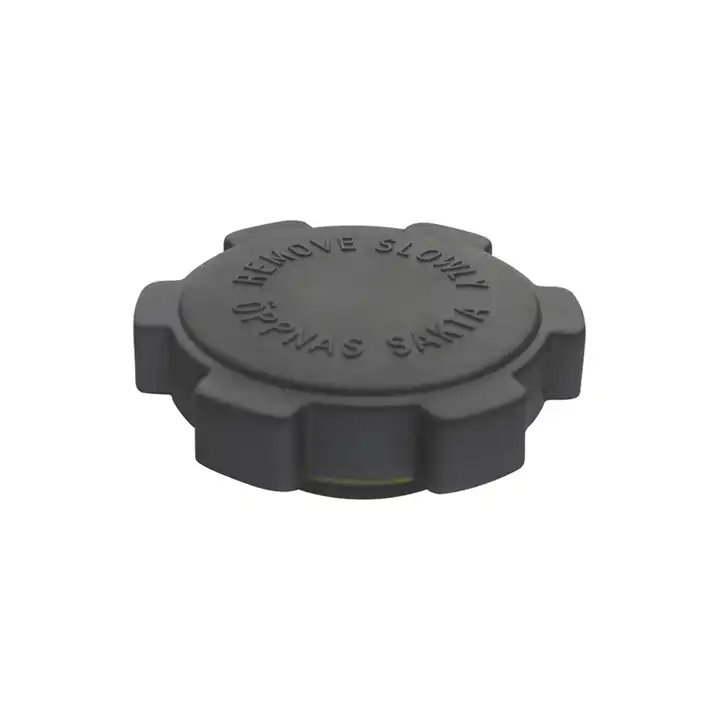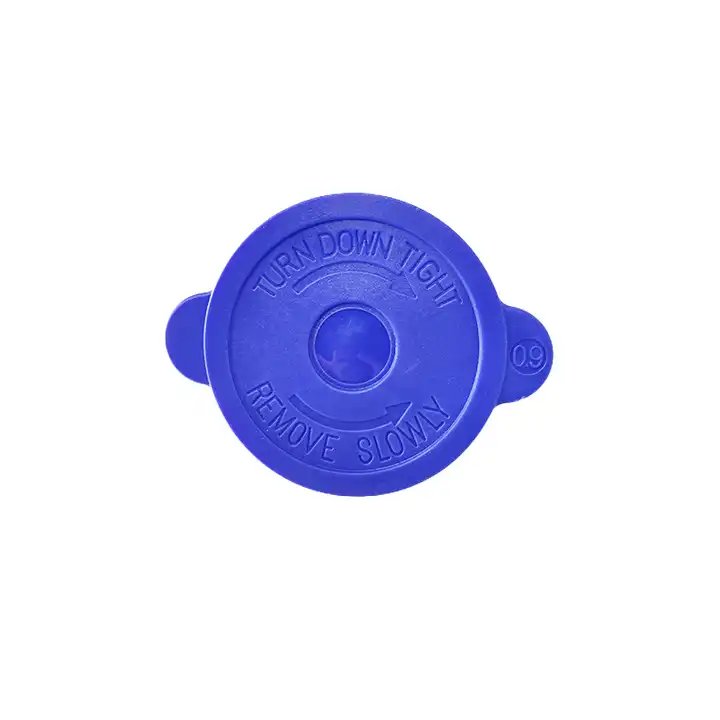Radiator Cap for John Deere: Ensuring Optimal Engine Cooling and Performance
When you think about maintaining your John Deere equipment, you might immediately think of oil changes, tire pressure, or fuel quality. However, there’s one small but crucial component that plays a significant role in the longevity and performance of your John Deere tractor, combine, or other machinery: the radiator cap.
The radiator cap is often overlooked, but it’s essential for regulating the temperature of your engine and ensuring your cooling system works efficiently. Whether you’re operating a John Deere tractor, combine harvester, or mower, maintaining a properly functioning radiator cap is key to keeping your machinery running smoothly, even during the toughest tasks.
In this blog, we’ll break down the importance of the radiator cap, what to look for when replacing it, and why it’s crucial for John Deere equipment specifically.
What Does the Radiator Cap Do?
The radiator cap is a vital component in your vehicle’s or machinery’s cooling system. Despite its small size, its role is essential for maintaining engine efficiency and preventing overheating. Here’s how it works:
- Pressure Regulation: The radiator cap maintains the correct pressure within the cooling system. The pressurized environment raises the coolant’s boiling point, which allows the engine to run hotter without risking overheating.
- Coolant Flow Control: When the engine heats up, the coolant expands and flows into the overflow tank. The radiator cap allows this to happen, and as the engine cools, it creates a vacuum that pulls coolant back into the radiator. This cycle keeps the system topped up and prevents air from entering the system, which could lead to corrosion or failure of the components.
- Safety Valve: The cap has a built-in spring-loaded valve that opens when the pressure inside the system exceeds the designed limit. This prevents the radiator and other components from being damaged due to excessive pressure.
For John Deere machinery, whether it’s a high-powered tractor working in the field or a combine running for hours on end, having a properly functioning radiator cap is key to keeping the engine at the correct temperature and preventing costly damage.
Why Is the Radiator Cap Important for John Deere Equipment?
John Deere machinery is known for its durability, but even the most reliable equipment needs proper maintenance to perform at its best. The radiator cap plays an integral role in ensuring your John Deere machine remains efficient, especially during heavy-duty tasks.
- Heavy-Duty Performance: John Deere machines often work in demanding environments, such as farms, construction sites, or forestry. They may be subjected to long hours of operation, and maintaining optimal engine temperatures is critical to prevent overheating, which can lead to engine wear, fluid loss, or even complete engine failure.
- Prevents Coolant Loss: The radiator cap helps to maintain the coolant level in the system. Without a proper seal, coolant could leak, leading to reduced coolant levels, which might result in engine overheating.
- Temperature Control in Varied Conditions: Whether you’re operating a John Deere machine in extreme cold or heat, the radiator cap ensures the cooling system works efficiently. In hot weather, the cap maintains pressure to prevent coolant from boiling; in cold weather, it ensures coolant doesn’t freeze and expand.
Key Features of a Quality Radiator Cap for John Deere Equipment
When choosing a radiator cap for your John Deere machinery, there are several features to keep in mind to ensure you’re selecting a high-quality, durable part. Here’s what to look for:
- Correct Pressure Rating:
- John Deere equipment often requires radiator caps with specific pressure ratings. Depending on the model and machinery type, this could be anywhere from 0.9 bar to 1.1 bar (around 13-16 psi). Always verify the correct pressure specification for your particular model.
- Durable Construction:
- The cap should be made from high-quality materials like stainless steel and reinforced plastic. This ensures the cap is resistant to the heat and pressure it will endure over long working hours. It should also be able to withstand UV damage, corrosion, and wear and tear from environmental exposure.
- Sealing Performance:
- The cap must form a secure seal to keep the coolant in place and prevent leaks. A poorly sealed cap can lead to coolant loss, which can cause engine overheating and potential damage.
- Easy to Install:
- A good radiator cap should be easy to replace and fit snugly on the radiator. It should be a simple, hassle-free process to ensure your equipment is back to work as soon as possible.
- OEM (Original Equipment Manufacturer) Standards:
- When replacing the radiator cap, it’s best to stick with OEM parts or OEM-equivalent caps that meet John Deere’s specifications. These parts are designed to perform optimally with your machinery and provide the best reliability.
Signs You Need to Replace the Radiator Cap
A radiator cap doesn’t last forever, and over time, wear and tear can cause it to lose its effectiveness. Here are some signs that indicate it might be time to replace your radiator cap:
- Overheating Engine:
If your engine is frequently overheating or running hotter than usual, it could be due to a failing radiator cap that isn’t maintaining proper pressure. - Coolant Leaks:
Check around the cap for any visible signs of coolant leaks or a wet, sticky residue. This may indicate that the seal has been compromised, and the cap is no longer sealing properly. - Erratic Temperature Gauge:
If your temperature gauge fluctuates unexpectedly or shows abnormal readings, it could be a sign of an issue with the cooling system, possibly due to a faulty radiator cap. - Corrosion or Damage:
If the radiator cap shows any signs of rust, cracks, or other visible damage, it’s time to replace it. A damaged cap will not provide a secure seal, leading to coolant loss and potential engine damage.
How to Choose the Right Radiator Cap for John Deere
To ensure your John Deere machinery continues to perform at its best, follow these simple steps when selecting a replacement radiator cap:
- Check Your Operator’s Manual:
Always refer to the manual for your specific John Deere model to find the exact pressure rating and part number for the radiator cap. Using the correct cap ensures proper cooling system function. - Opt for OEM Parts:
Whenever possible, choose OEM parts to ensure compatibility and quality. If you go for an aftermarket option, ensure it meets the manufacturer’s specifications. - Inspect the Cap:
Before replacing the cap, make sure it’s the correct size and fits securely. The seal should be intact, and the spring-loaded valve should operate smoothly. - Regular Maintenance:
As part of regular maintenance, check the radiator cap periodically for any signs of wear or damage. Replacing it every few years as part of your routine service can help prevent future issues.
Conclusion
The radiator cap for John Deere equipment may be small, but it plays a crucial role in maintaining the efficiency and longevity of your machinery. By regulating the pressure within the cooling system, preventing coolant loss, and ensuring your engine stays at the correct temperature, the radiator cap helps you avoid costly repairs and downtime.
When replacing the radiator cap, always choose high-quality OEM parts and ensure they meet the exact specifications for your John Deere model. Regularly inspecting and replacing a worn or damaged radiator cap will help keep your equipment running at peak performance, no matter the task at hand.







